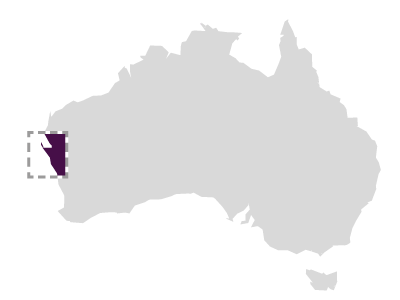Zeewijk (1727/06/09)
Houtman Abrolhos, Gun Island

Zeewijk was wrecked on the Houtman Abrolhos on 9 June 1727. The Zeewijk did not break up immediately and goods, including the treasure chests, were transferred to Gun Island. It was obvious to the crew that the ship could never be floated from its position locked into the reef.
A rescue group of eleven of the fittest survivors and First Mate set off for Batavia in the longboat on 10 July, but were never heard of again.
In December 1727 two boys were found guilty of having committed sodomy together. They were sentenced to death and marooned, each boy on a separate island.
The survivors then built a boat enabling 82 out of the initial crew of 208 to reach their original destination of Batavia on 30 April 1728. Utilising materials from the wreck and local mangrove timber the crew constructed this boat, some sort of a sloop about 16.5 m long, which they named Sloepie, the first European boat built in Australia. On 26 March, 88 men set off on the one-month journey to Batavia. Six died on the way, leaving 82 of the initial 208 to arrive in Batavia on 30 April 1728.
Batavia's Council of Justice prosecuted skipper Jan Steins for losing the Zeewijk and falsifying the ship's records. He lost his position, salary and property to the Company.
In 1840 the crew of HMS Beagle found relics at the camp site, including a VOC cannon and two coins dated 1707 and 1720 which helped to confirm that the site was that of the Zeewijk. They named the Zeewyk Channel after the wreck. In the 1880s and 1890s a large volume of material was recovered during guano mining. Items including bottles, coins, wine glasses, jars, pots, spoons, knives, musket and cannon balls, tobacco and pipes were found.
Florance Broadhurst, son of entrepreneur Charles Edward Broadhurst and director of the Broadhurst and McNeil phosphate company, catalogued the finds, initially thinking they were from the VOC ship Batavia and ended up donating most to the Western Australian Museum in Perth. In 1952, during a visit to Geraldton, Lieutenant Commander M.R. Bromell of the Royal Australian Navy learned that rock lobster fisherman Bill Newbold had found a cannon on the seabed, and during a subsequent visit, Bromell located a cannon on the leeward side of the Half Moon Reef. After an elephant tusk found two years earlier put him on the trail, in March 1968 journalist and diver Hugh Edwards led divers Max Cramer, Neil McLaghlan and Museum staff Harry Bingham and Dr Colin Jack-Hinton to the seaward side of the reef to find the main wreck site. The Western Australian Museum subsequently conducted several expeditions to survey the site and to recover artefacts, the most notable in 1976 by Catharina Ingleman-Sundberg, who also completed a catalogue of all the finds from the site.
Ship Built
Owner VOC
Master Jan Steins (Steijns)
Builder VOC
Country Built Netherlands
Port Built Rammekens
When Built 1725
Ship Lost
Grouped Region Mid-West
Sinking On reef
Crew 208
Deaths 72
When Lost 1727/06/09
Where Lost Houtman Abrolhos, Gun Island
Latitude -28.8838
Longitude 113.8134
Position Information GPS
Port From Vlissingen
Port To Batavia
Cargo Coins, general cargo
Ship Details
Engine N
Length 40.60
TONA 850.00
Museum Reference
Unique Number 806
Sunk Code Wrecked and sunk
File Number 2009/0002/SG _MA-455/71
Chart Number AUS 332, 333, 1056
Protected Protected Federal
Found Y
Inspected Y
Date Inspected 1992/05
Confidential NO